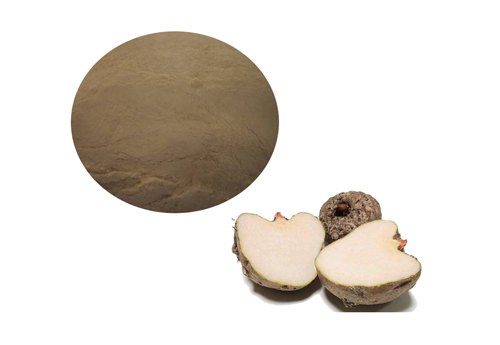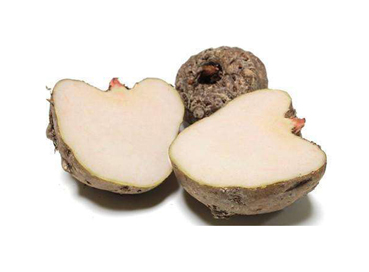How Much Do You Know About Ceramides?
Your skin contains fatty acids called ceramides . They protect the skin from dryness and infection. Many creams and moisturizers contain ceramides. Using a ceramide moisturizer can help restore your skin's natural ceramide levels and improve its health. In this article, we will cover the definition of ceramides, types of ceramides, and the benefits of ceramides for the skin to help you choose the best ceramides for your needs.
What are ceramides?
Ceramides are fats or lipids that are found in skin cells. They make up 30% to 40% of the outer layer or epidermis of the skin. Ceramides are important for keeping the skin hydrated and preventing bacteria from entering the body. If your skin's ceramide level decreases (which usually happens as you age), it may become dehydrated. You may experience skin problems, such as dryness and irritation.
Ceramides play a role in your skin's barrier function, which is your body's first line of defense against external pollutants and toxins. They also promote brain development and maintain cellular function. They are commonly found in skin care products such as ceramide moisturizers, creams, serums, and toners - all of which can help keep your skin healthy by boosting ceramide levels.
Types of Ceramides
There are natural and synthetic ceramides. Natural ceramides are found in the outer layer of the skin, as well as in animals such as cattle and plants such as soy.
Synthetic ceramides (also known as pseudoceramides) are man-made. Because they are free of contaminants and more stable than natural ceramides, synthetic ceramides are more commonly used in skin care products.
Ceramides are composed of a substance called sphingosine. Sphingosine is a chain of carbon atoms with amino acids. It has different forms that combine with other fatty acids to form ceramides.
Konjac Ceramide
Dietary sphingolipids such as glucosylceramide (GlcCer) are potential nutritional factors associated with the prevention of metabolic syndrome. Our current understanding is that dietary GlcCer is degraded to ceramide and further metabolized to sphingoid bases in the intestine. However, ceramide is only found in trace amounts in food plants and thus is frequently taken as GlcCer in a health supplement.
Konjac, a plant tuber, is a rich source of GlcCer (kGlcCer) and has been commercialized as a dietary supplement to improve dry and itchy skin caused by epidermal ceramide deficiency. Nerve growth factor (NGF) is produced by skin cells and is one of the pruritic factors in the cutaneous stratum corneum.
Konjac ceramide is a functional food and cosmetic active ingredient. Clinical studies have shown that konjac ceramide levels decline as people age, especially on the face and hands. Research on the application of konjac ceramide has extended from skin care products, shampoos, and bath products to products with physiological functions and potential pharmacological applications.
Based on the form of sphingosine and the fatty acid that binds it, there are 12 types of ceramides, named ceramide 1 to 12. You’re likely to see the following ceramides listed on the labels of your skin care products:
Ceramide 1, also called ceramide EOS
Ceramide 2, also called ceramide NS or NG
Ceramide 3, also called ceramide NP
Ceramide 6-II also called ceramide AP
Ceramide 9, also called ceramide EOP
Phytosphingosine
Sphingosine

What does ceramide do for the skin?
Ceramides have many benefits for the skin. They can.
Improve the health of skin cells
Help form a barrier that prevents moisture from leaving your skin
Prevent dryness and irritation by locking moisture into the skin
Protect your skin from environmental damage
Protect your skin from bacteria and fungi, which cause allergies and infections
Promotes anti-aging by keeping your skin moist and supple
If your skin's ceramide levels drop, you may suffer from skin conditions such as
Atopic dermatitis or eczema, which makes your skin red and itchy
Ichthyosis, which makes your skin look dry and rough like fish scales
Dry skin, which may occur due to environmental changes or other health conditions
Ceramide skin care products
Your skin is naturally made up of ceramides. But ceramide levels can decrease over time, making your skin dry. Studies have shown that dryness is caused by a decrease in the levels of ceramides 1 to 6 in the skin.
You can use ceramide moisturizers, toners, and serums to hydrate and repair the health of your skin. These products replenish your skin's natural ceramide production. The added ceramides lock in moisture and prevent water loss, leaving your skin soft, smooth, and healthy.
Choosing the Right Ceramide Skin Care Products
Using products with ceramides is good for your skin, but it is important to choose the right product for your skin type. For example, if you have very dry skin, using a cream that contains only ceramides may not be right for you. To heal dry facial skin, look for skin care products that contain ceramides 1, 3, and 6-II or that contain sphingosine or phytosphingosine.
Studies have shown that skin care products containing anti-inflammatory and penetration-promoting agents can improve the absorption of ceramides into the skin, relieving skin conditions and restoring healthy skin.
Before using ceramide skin care products, consult your dermatologist to find out what is right for your skin.
Shaanxi Youbio Technology Co., Ltd. is a konjac ceramide supplier, committed to supplying natural, healthy and reliable materials for the food, pharmaceutical, dietary supplement, and cosmetics industries, the raw materials and extracts we produce have comprehensive certificates, as well as providing professional solution of active component screening, large-scale production, functional research and finish product design for the customers.


评论
发表评论